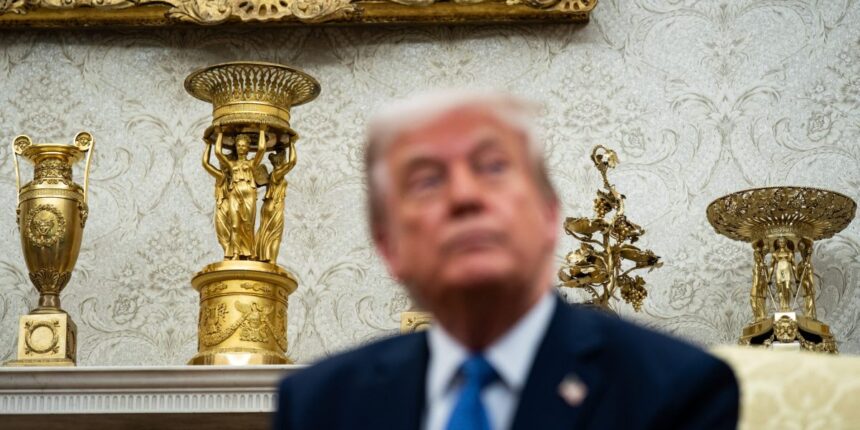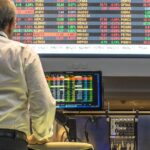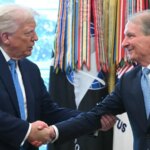Wall Street appears unfazed by the looming prospect of a government shutdown, with analysts across various sectors expressing confidence that any ensuing market volatility will be short-lived. Predictions indicate that the markets will stabilize swiftly once political tensions in Washington D.C. ease.
The ongoing stock market rally has seen major indices reach record highs, bolstered by expectations that the Federal Reserve will announce interest rate cuts during its upcoming meeting. Overall perceptions suggest that the threat of a recession has significantly diminished, reinforcing widespread optimism in the economic landscape.
Despite this positive sentiment, a notable trend has emerged: investors are increasingly turning to gold, typically seen as a ‘safe haven’ asset. As of this moment, gold prices are approaching $3,870 per troy ounce, marking another record high for the commodity. Gold’s price surge is particularly striking, with a rise of over 45% in just the past year, outpacing the returns of the S&P 500. This shift suggests that investors may be prioritizing the security offered by gold over the inherent risks associated with equities.
The rush toward gold has notably influenced stock market activity, exemplified by the recent IPO of Zijin Gold, which raised nearly 25 billion Hong Kong dollars (approximately $3.2 billion) and became the world’s second-largest trading debut of the year. Analysts attribute this substantial fundraising to increasing consumer demand for gold, further highlighting its desirability amid current market conditions.
Investment bank Goldman Sachs has identified gold as its “favorite long commodity,” suggesting that further gains are anticipated. Economists from Goldman predict a price increase to $4,000 per troy ounce by mid-2026, with a potential rise to $4,300 by the end of the same year. They emphasize that even minor reallocations from other asset classes could significantly affect gold’s market performance.
There is also a marked increase in private investors diversifying their portfolios with gold, as reflected in September’s gold ETF holdings, which reached 109 tonnes—far exceeding estimates of 17 tonnes. The Goldman Sachs team notes that such a small market (gold ETF holdings represent roughly 1.5% of privately-owned U.S. Treasuries) means modest shifts can lead to considerable price movements in gold.
Expectations are also high for central banks to ramp up their gold purchases over the next year. A recent survey by the World Gold Council, involving 73 central banks, indicated that 95% anticipate increasing their gold reserves, with 43% expecting to augment their own holdings. Notably, no central banks indicated plans to reduce their reserves.
Experts, such as Wouter Hueskes from APG, highlight several motivations for this trend, including geopolitical and economic uncertainties and a desire among nations like China and Russia to de-dollarize their economies. Gold’s status as a politically neutral asset, immune to centralized control, positions it as an attractive reserve. Additionally, gold serves as a safeguard against defaults and economic sanctions, further enhancing its appeal for central banks.
In conjunction with these developments, Mark Haefele, chief investment officer at UBS Global Wealth Management, noted the potential for increased volatility as markets enter the final quarter of 2025. Although he reassures clients of historical resilience following disruptions, he advocates for gold allocation within investment portfolios, underscoring its efficacy as a hedge during periods of political and economic instability.
In market updates this morning, S&P 500 futures showed an uptick of 0.16%. The STOXX Europe 600 was up by 0.77%, while the U.K.’s FTSE 100 and Japan’s Nikkei 225 experienced increases of 0.11% and 0.87%, respectively. Meanwhile, the South Korean KOSPI rose by 2.7%, and India’s Nifty 50 was up by 0.92% before session close. In the cryptocurrency sphere, Bitcoin reached a new height at $118.6K, as excitement builds for the upcoming Fortune Global Forum scheduled for October 26–27, 2025, in Riyadh.







